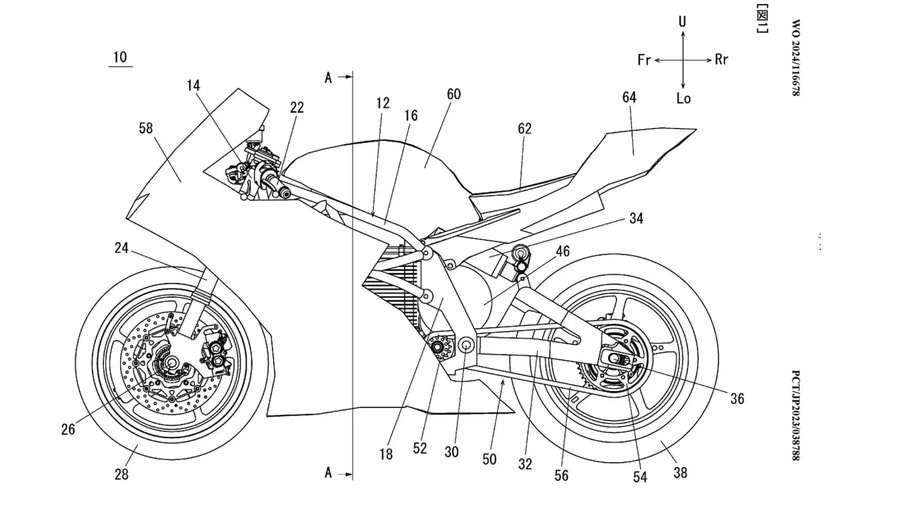New Patent Shows Electric Yamaha Sportbike, Production Uncertain

We've yet to see any major OEMs enter the market with a serious electric sportbike contender. And that's what makes one of Yamaha's most recent patents so brow-lifting.
There's been enough talk about a super-sporty Damon to put me to sleep, and Zero's SR/S is flying a flag, but I wouldn't call it a superbike flag. This patent, however, appears to show an electric sportbike with some oomph backing its sporting credentials.
For starters, there's a large electric motor and battery where we'd usually see a combustion engine. This doesn't necessarily mean that the bike will be very sporty, but there are a few other features that indicate it could be, like the dual four-pot disc brakes up front. And then there's the apparent weight-saving method.
This patent shows an air-cooled battery, although some high-performance electric motorcycles use liquid-cooled batteries. The benefit of running an air-cooled battery is significant weight savings, as Yamaha won't need to fit all the pipework, pumps, radiators, and sensors that are necessary to run a liquid-cooling system.
An air-cooled battery should also help keep costs down, which is great to see, as we've noted here before that high prices for electric motorcycles could be holding the next generation of riders back from testing the waters.
Fins that run along the sides help cool the batteries on this model. These fins increase the surface area for cooling and add more rigidity while essentially adding no weight.
Adding to this model's sporting potential is a trellis-style frame and what looks like an aluminum swingarm. Although the bike is fully faired, this design leaves some of the trellis frame exposed. We can also see that the motor sits quite far back to allow more space for the batteries. Having the motor so far back means the designers have had to mount the rear shock quite high. At the front, upside-down forks take care of dampening.
Sitting above the rear shock, under the seat, is the onboard charging unit. The battery management system and electronic control system are toward the front of the bike, above the battery modules. Sitting between the charging unit and the battery management system is the inverter.
When we'll see a prototype of this model, I can't say, however, EICMA is around the corner and undoubtedly a great event to gauge public interest. But that's not the real question on my lips. The real question is power, always power.
I can't tell from the patent what the power output of the electric motor will be, but I can tell you Yamaha already produces in-house powertrains for third-party businesses. The motors range in power from 35kW (47 hp) to 350kW (470 hp). The 350kW motor is intended to be mounted on the Subaru STI E-RA EV, but that might be overkill for a motorcycle.
Related News
